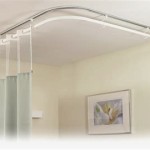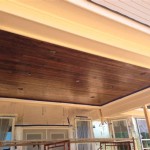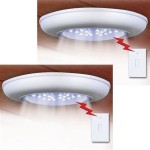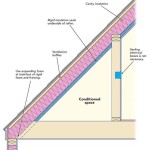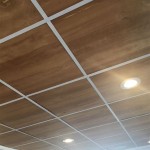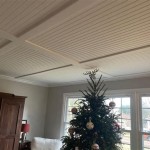Mounting a Fan on a Sloped Ceiling: A Comprehensive Guide
Installing a ceiling fan can significantly improve airflow and energy efficiency in a room. However, mounting a fan on a sloped ceiling presents unique challenges compared to a standard flat ceiling. This article provides a detailed guide to successfully installing a ceiling fan on a sloped ceiling, covering essential considerations, necessary materials, step-by-step instructions, and safety precautions.
Understanding Compatibility and Slope Considerations
Before beginning the installation process, it is crucial to determine whether the chosen ceiling fan is compatible with the ceiling's slope. Not all ceiling fans are designed for sloped ceilings. The fan's packaging and specifications will typically indicate the maximum allowable slope. This is often expressed in degrees or as a ratio (e.g., 4/12 pitch). Exceeding this limit can compromise the fan's performance and safety.
The ceiling's slope, or pitch, refers to its angle of elevation. This angle is critical for determining the appropriate downrod length and the type of mounting hardware needed. A steeper slope necessitates a longer downrod to ensure the fan blades have sufficient clearance from the ceiling, preventing them from striking the surface and maximizing airflow efficiency. Furthermore, a sloped ceiling adapter or mounting bracket may be required to provide a stable and level platform for the fan's mounting canopy.
To accurately measure the ceiling's slope, a level and an angle finder are necessary. A level is held horizontally against the ceiling, and the angle finder is used to measure the angle between the level and the ceiling's surface. Alternatively, one can measure the rise and run of the slope over a known distance (e.g., 12 inches). The ratio of the rise to the run represents the ceiling pitch, which can then be converted to an angle using trigonometric functions or online calculators.
After determining the ceiling's slope, consult the ceiling fan's installation instructions. The instructions will provide specific recommendations for downrod length based on the measured slope. Selecting the correct downrod length is vital for both safety and optimal performance. If the downrod is too short, the fan blades may hit the ceiling; if it is too long, the fan may hang too low and pose a safety hazard or obstruct movement within the room.
In situations involving extremely steep slopes, specialized mounting kits designed specifically for angled ceilings might be required. These kits often include adjustable brackets and downrods that can accommodate a wide range of slopes. It's also important to consider the weight rating of the ceiling junction box. Ensure that the box is rated to support the weight of the fan, especially when using a long downrod, as this increases the leverage exerted on the mounting point.
Essential Materials and Tools for Installation
A successful ceiling fan installation requires a specific set of materials and tools. Gathering these items before commencing the project ensures a smooth and efficient process. Here's a comprehensive list:
*Ceiling Fan:
The chosen fan model, specifically designed or compatible with sloped ceilings. *Downrod:
A downrod of the appropriate length, determined by the ceiling's slope and the fan manufacturer's recommendations. *Sloped Ceiling Adapter (if required):
A mounting bracket designed to provide a level surface for the fan's mounting canopy on a sloped ceiling. *Junction Box:
A ceiling junction box rated to support the weight of the fan. If the existing box is not properly rated, it must be replaced with one that meets the safety standards. *Wiring Connectors (Wire Nuts):
UL-listed wire connectors for securely connecting the fan's wiring to the existing electrical wiring. *Electrical Tape:
Used for insulating and securing wire connections. *Screws and Hardware:
All necessary screws, bolts, and washers included with the fan or mounting kit. Ensure they are of appropriate size and strength for the installation. *Wire Strippers:
For safely stripping the insulation from electrical wires. *Pliers:
For twisting and manipulating wires. *Screwdrivers:
A variety of screwdrivers (Phillips head and flathead) to fit the screws used in the fan and the mounting hardware. *Voltage Tester (Non-Contact):
To verify that the circuit is de-energized before working on the electrical wiring. *Ladder:
A sturdy ladder tall enough to safely reach the ceiling. *Drill (with appropriate drill bits):
If necessary, for drilling pilot holes for screws or for attaching the mounting bracket to the ceiling joist. *Level:
To ensure the fan is hanging straight. *Measuring Tape:
To accurately measure distances and downrod length. *Safety Glasses:
To protect eyes from debris. *Gloves:
To protect hands during the installation process.Before starting the installation, thoroughly inspect all components to ensure they are in good condition and that no parts are missing. Consult the fan's installation manual to familiarize oneself with the specific instructions and requirements for the chosen model. If any parts are missing or damaged, contact the manufacturer or retailer for replacements before proceeding.
Step-by-Step Installation Process
With the appropriate materials and tools gathered, the installation process can begin. The following steps provide a general guide, but it is essential to consult the fan's specific installation instructions for detailed guidance. Ensure to turn OFF the circuit breaker for the ceiling fan at the electrical panel before beginning any electrical work.
Step 1: Prepare the Junction Box:
Verify that the existing junction box is properly rated for the weight of the ceiling fan. If it is not, replace it with a fan-rated junction box securely attached to a ceiling joist. The junction box must be firmly mounted to provide a stable and safe support for the fan.Step 2: Install the Mounting Bracket:
Attach the sloped ceiling adapter (if required) to the junction box according to the manufacturer's instructions. The adapter provides a level mounting surface for the fan's canopy. If a sloped ceiling adapter is not needed, attach the mounting bracket directly to the junction box.Step 3: Assemble the Fan Motor and Downrod:
Assemble the fan motor and downrod according to the fan's instructions. Feed the fan's wiring through the downrod. The length of the downrod should be appropriate for the ceiling's slope, ensuring adequate clearance between the fan blades and the ceiling.Step 4: Hang the Fan Motor Assembly:
Carefully lift the fan motor assembly and hang it on the mounting bracket. Most mounting brackets have a hook-like feature that allows the fan to hang temporarily while the wiring connections are made. This provides a hands-free operation making the wiring process easier.Step 5: Connect the Electrical Wiring:
Connect the fan's wiring to the existing electrical wiring in the junction box, following the fan's wiring diagram. Typically, this involves connecting the black wire (hot) from the fan to the black wire from the electrical supply, the white wire (neutral) from the fan to the white wire from the electrical supply, and the green or bare copper wire (ground) from the fan to the green or bare copper wire from the electrical supply. Use UL-listed wire connectors to securely join the wires. Wrap each connection with electrical tape for added insulation and security.Step 6: Secure the Fan Canopy:
Once the wiring is complete, carefully tuck the wires into the junction box and attach the fan canopy to the mounting bracket. Secure the canopy with the provided screws. Ensure the canopy fits snugly against the ceiling and that no wires are pinched or exposed.Step 7: Attach the Fan Blades:
Attach the fan blades to the fan motor housing according to the fan's instructions. Ensure all screws are tightened securely. Imbalance can lead to wobbling and premature wear.Step 8: Install the Light Kit (if applicable):
If the fan includes a light kit, install it according to the fan's instructions. Connect the light kit's wiring to the fan's wiring as specified in the wiring diagram. Install the light bulbs and any glass shades or covers.Step 9: Test the Fan:
After completing the installation, turn on the circuit breaker at the electrical panel. Test the fan to ensure it is functioning properly. Check that the fan blades are rotating in the correct direction and that the light kit (if installed) is working. If the fan wobbles excessively, balance the blades using the provided balancing kit or by slightly adjusting the blade screws.Step 10: Final Inspection:
Conduct a final inspection of the installation. Ensure all screws are tightened, all wiring connections are secure, and the fan is hanging level. Verify that the fan operates smoothly and quietly. Clean up any debris or tools from the work area.If the fan installation involves complex wiring or unfamiliar electrical work, it is recommended to consult a qualified electrician. A professional can ensure the installation meets all safety codes and regulations and that the fan operates safely and efficiently.

How To Install A Ceiling Fan On Sloped Lemon Thistle

How To Choose A Ceiling Fan For Vaulted Ceilings Lightology

How To Install A Ceiling Fan On Sloped Lemon Thistle

Vaulted Sloped Ceiling Adapter For Modern Fan Company Fans Stardust

Fans On An Angle Installing Ceiling Angled Or Raked

Vaulted Sloped Ceiling Adapter For Modern Fan Company Fans Stardust

Ceiling Fans For Angled Ceilings

Vaulted Ceiling Fans Sloped Lightology

Hunter Fans How To Install Your Ceiling Fan Cpo S

How To Install A Fan On Steep Ceiling Faro Barcelona
Related Posts

